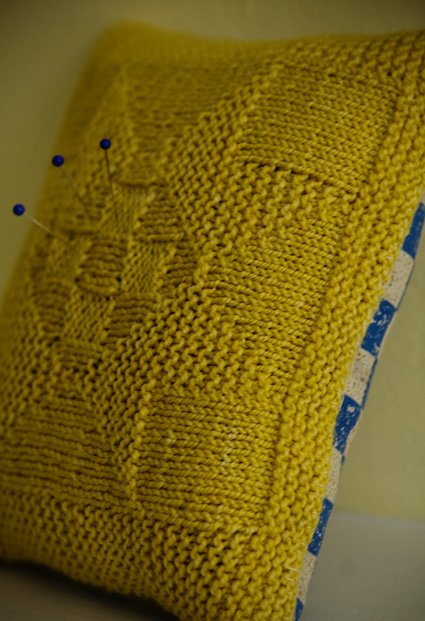

|
|
|
|
 |
translated by Franklin Habit from A
Knitting-Book of Counterpanes: Toilet-Covers,
Pincushions, and Other Articles of Fancy
Work (1871) by
Mrs. George Cupples.
|
|
FINISHED MEASUREMENTS |
Will vary according to choice of yarn and
needles. |
|
MATERIALS Notions |
| GAUGE |
32 sts/48 rows = 4 inches in stockinette stitch |
|
PATTERN NOTES |
The star pattern, worked on the center 34 stitches of the block, is surrounded by a border of garter stitch. Mrs. Cupples calls for 8 stitches in the right and left borders; but if you plan to assemble multiple blocks for a blanket, consider reducing them to 4 stitches each (a total of 42 sts to CO). This will give you vertical and horizontal borders of similar widths after sewing. Star Pattern Row 1 [WS]: P9, k1, p14, k1, p9.
|
|
DIRECTIONS |
|
With MC, CO 50 sts.
Lower Border Body Upper Border BO.
FINISHING
|
|
|
| ABOUT THE DESIGNER |
| Franklin Habit is the Chicago-based proprietor
of the popular knitting blog The
Panopticon and
author of It
Itches: A Stash of Knitting Cartoons He doesn't loll about living history museums all day, since men in living history museums don't get to knit. |
| Pattern & images © 2011. Franklin Habit. |